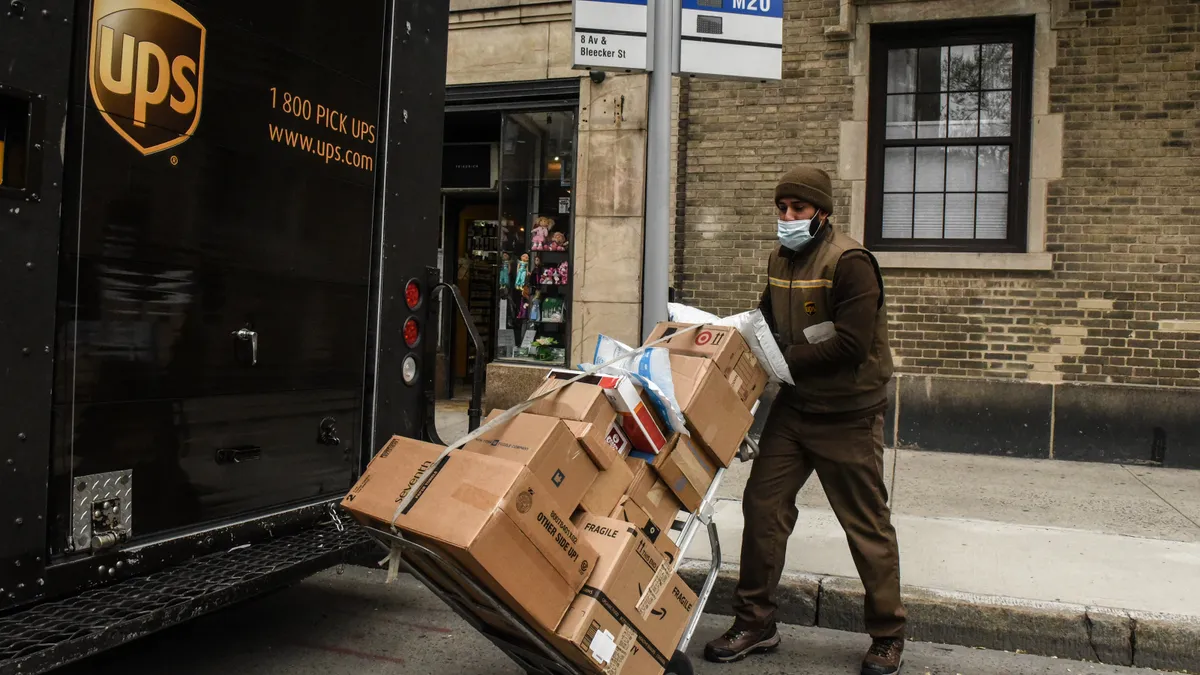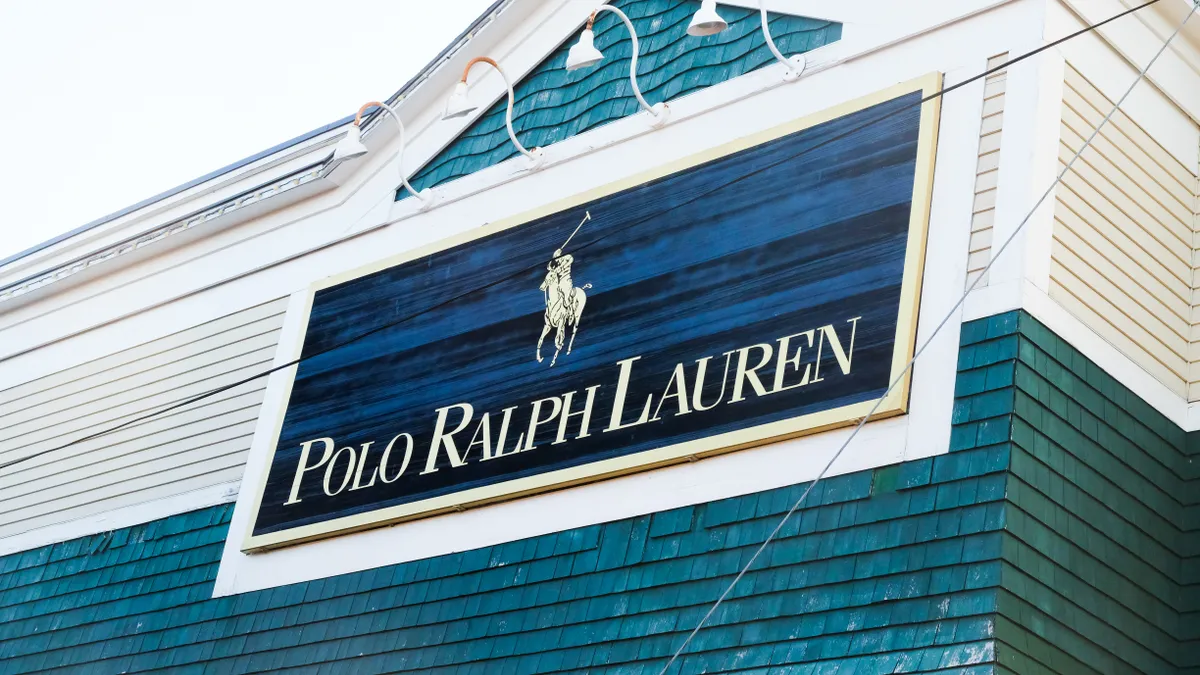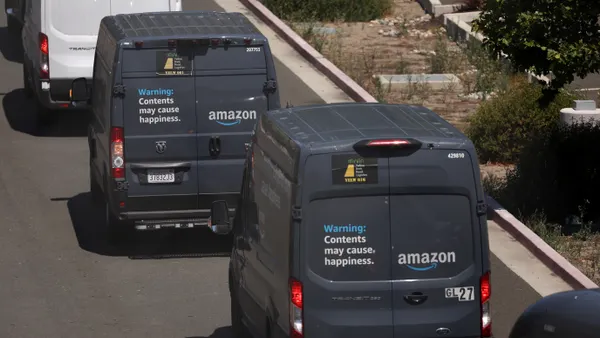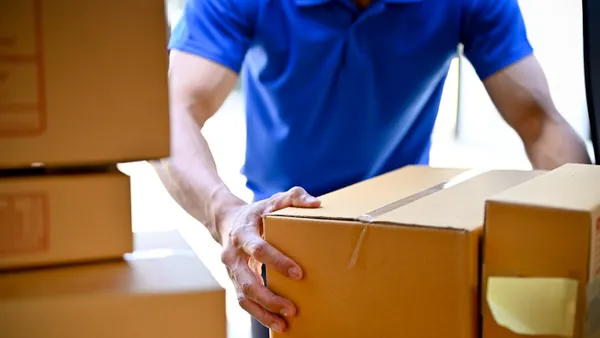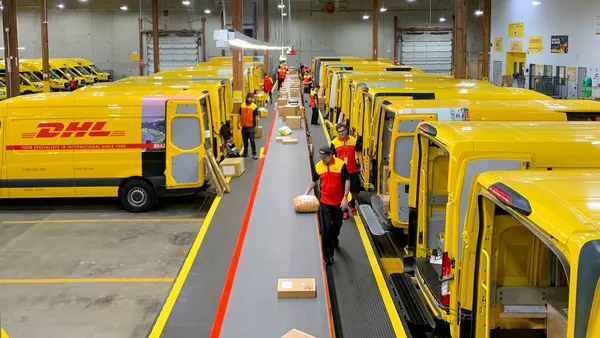Dive Brief:
- UPS wants to improve its delivery density, or the number of deliveries made on a single route, to reduce its carbon footprint, according to EVP and Chief Digital and Technology Officer Bala Subramanian.
- The company is trying to increase its deliveries-per-stop ratio from 1.28 to 1.4, leaning on technologies like machine learning to do so, Subramanian said at the 2023 UPS Impact Summit on Oct. 17.
- "The goal is, if we do it, it actually has a significant benefit, not only for the company, but also for sustainability," he said.
Dive Insight:
Delivering more packages in fewer stops is one of many ways UPS is pushing to reach its long-term sustainability goals. The company aims to halve its CO2 per package delivered in its global operations by 2035, compared to a 2020 baseline.
While greener transportation methods like electric vehicles are important in UPS' pursuit of a more sustainable network, Subramanian said it's important for the company to consider how its existing vehicle fleet can emit fewer greenhouse gasses. There is a direct correlation between UPS optimizing its operations and reducing its emissions, he added.
"If you have to switch everything, the cost is going to be incredibly high — we will not be able to do it," Subramanian said. "So we are trying to make sure that we look at the future, but also do what we could today."
Better delivery density has long been on UPS' radar, and for good reason. Improving this metric can both eliminate unnecessary emissions and make more efficient use of transportation assets, reducing costs in the process.
UPS estimates the cost it incurs for last-mile delivery of a package is $5.50, with only 60 cents added for each additional package, CEO Carol Tomé said last year.
That statistic underscores the benefits of a delivery density pilot program UPS launched in partnership with CommerceHub, which was unveiled in 2022. Through the pilot, the technology company virtually holds an order until it can be matched with another shipment to the same destination, but the hold's duration will only last as long as the service level agreement allows.
“Imagine the value that can be released if we improve the density,” Tomé said.
Other parcel carriers are also pursuing better delivery density. For example, Amazon is using a delivery route algorithm to avoid millions of miles driven by identifying the most effective shipping options. FedEx is trimming duplicitous routes in its Express and Ground units via its Network 2.0 plan.
Editor's note: This story was first published in our Logistics Weekly newsletter. Sign up here.



